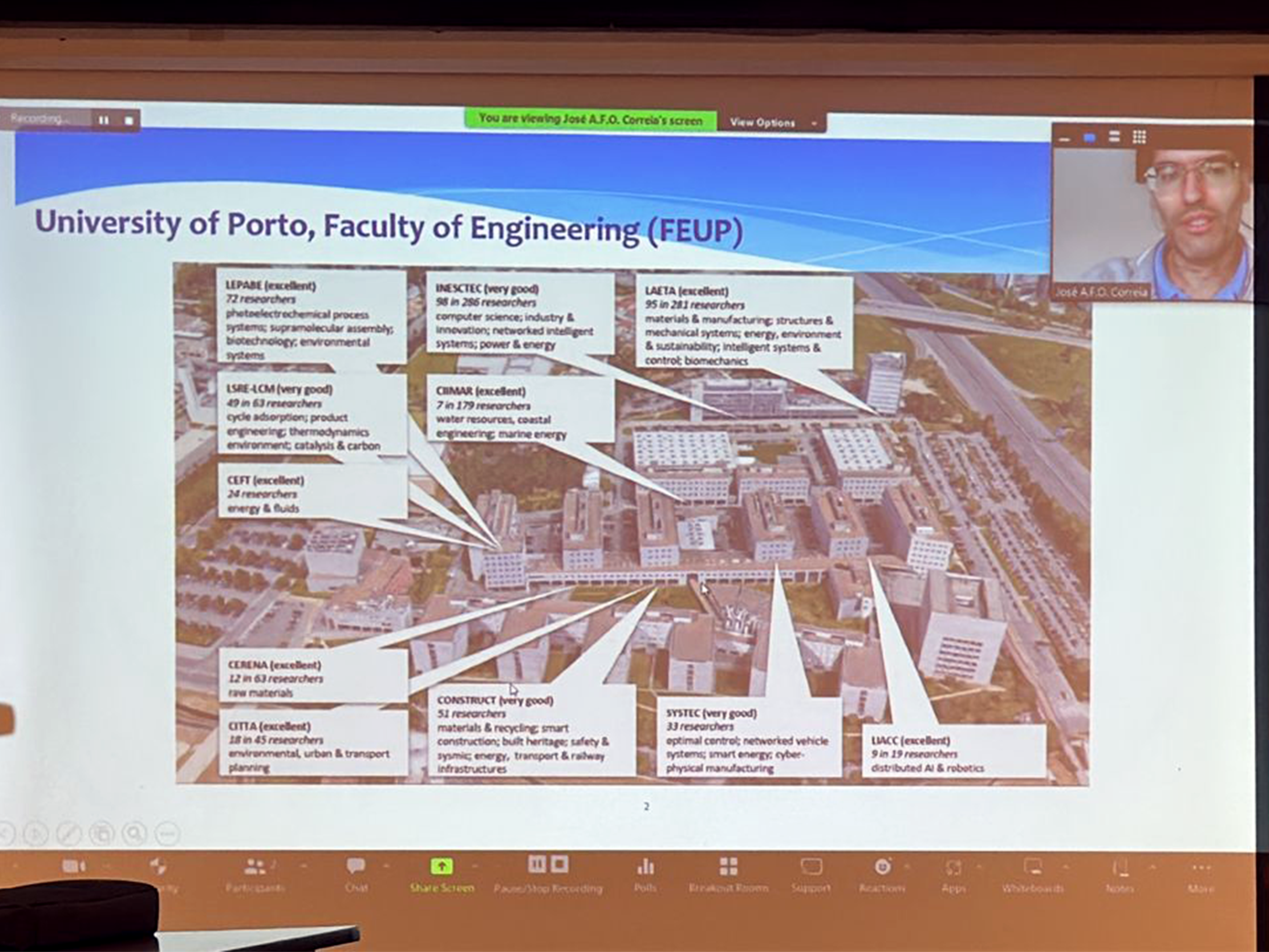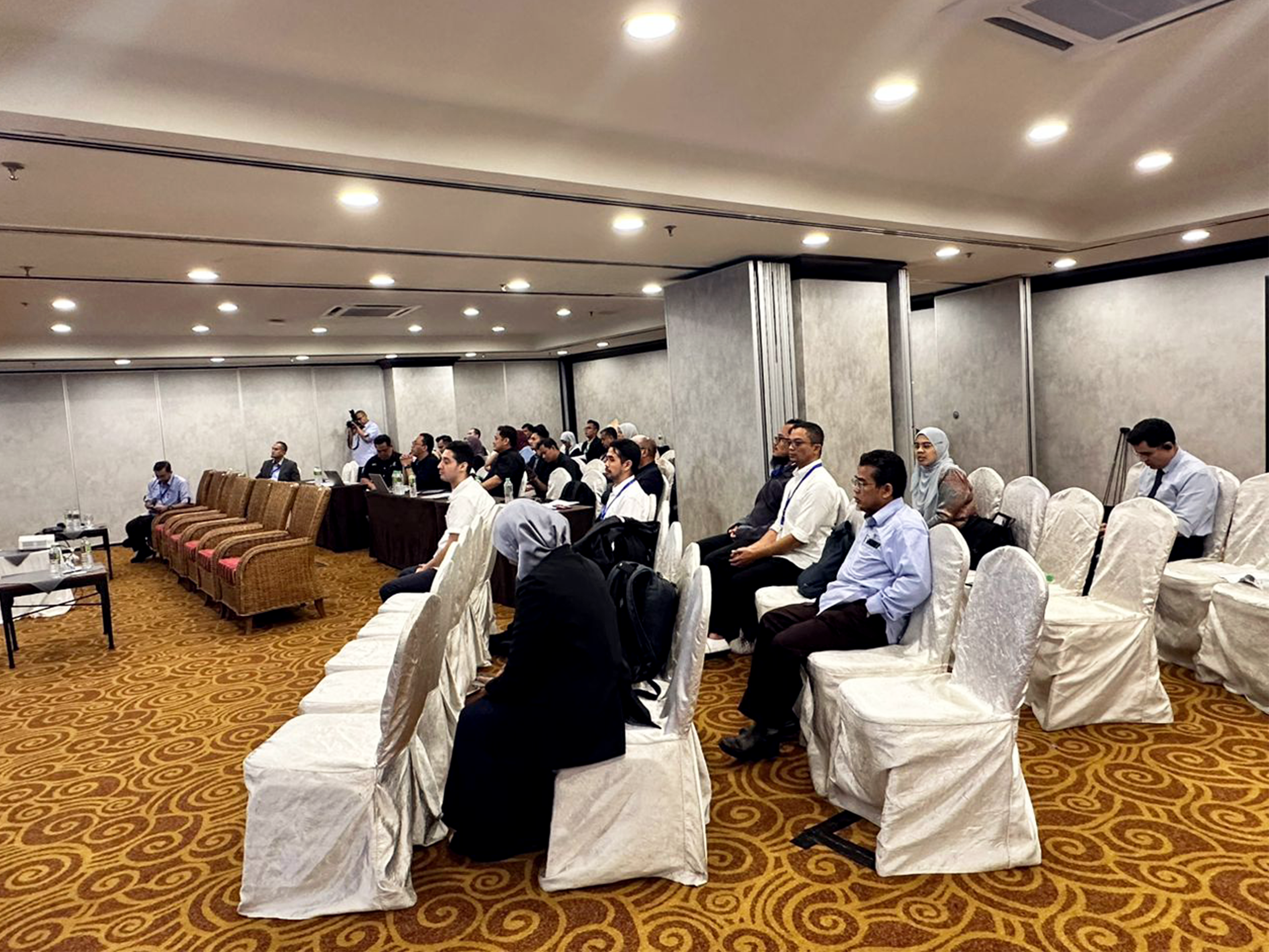We are delighted to inform you that our coordinator, Professor José A.F.O Correia, delivered an online keynote lecture at the SDMMS2023: 7th Symposium on Damage Mechanics of Materials and Structures. The symposium took place at the Bangi Resort Hotel, Malaysia.
“A METHODOLOGY BASED ON THE NON-LINEAR ACCUMULATION AND PROBABILISTIC MODELLING FOR STRESS-LIFE PREDICTION AT VARIABLE AMPLITUDE LOADING”
In 1924, Palmgren [1] suggested for the first time the concept of the linear damage rule (LDR). About two decades later (1945), Miner [2] proposed the first mathematical expression for the damage computation. Fatigue damage (𝑀) can be calculated in terms of the number of cycles applied at a given stress range (𝑛𝑖) divided by the corresponding number of cycles required to produce failure at the same stress range (𝑁𝑓𝑖). Miner’s model is proposed in the majority of design codes. The sequential loading effects not properly accounted using the Miner’s model. Therefore, the non-linear damage accumulation models are required when sequential effects are important. Due to deficiencies associated with LDR, Marco and Starkey [3] proposed the
first non-linear load-dependent damage theory, in 1954. In 1960, the two-stage linear damage approach suggested by Langer and Grover [4] considered cycle ratios for two separate stages, in the fatigue damage process of constant amplitude stressing: 1) Damage due to crack initiation, 𝑁𝐼 = 𝑁𝑓; and, 2) Damage due to crack propagation, 𝑁𝐼𝐼 = (1 − α)𝑁𝑓 where α is a life fraction factor for the initiation stage. In 1966 and 1981, a double linear damage rule (DLDR) for treating cumulative fatigue damage was proposed by Manson & Halford [5]. Recently, Huffman & Beckman [6] proposed a non-linear damage accumulation fatigue model in which is modelled by calculating the damage of each cycle based on the state of damage when that cycle occurs, using the assumption that damage accumulation behaves like crack growth. The effect is that for any particular reversal to a tensile stress in a variable amplitude stress history, that stress reversal will cause more damage later in a history than it will at the beginning of the history. An important issue of fatigue damage accumulation theories is their development on a deterministic form, when it is well recognized the probabilistic nature of the fatigue lifetime. Some attempts have been presented in the literature concerning probabilistic fatigue approaches, but fundamentally they are based on linear damage summation approaches [7,6,8,10]. In this research work, a methodology based on the non-linear accumulation and probabilistic modelling for stress-life prediction at variable amplitude loading using fatigue data at constant amplitude loading. The probabilistic modelling used in the non-linear damage accumulation fatigue model is based on probabilistic S-N fields for constant amplitude fatigue data proposed by Castillo and Fernández-Canteli [11,12]. This proposed methodology is validated usingexperimental variable amplitude fatigue data for riveted joints made of puddle iron from the Fão Bridge under stress-controlled conditions [13,14]. This methodology can be generalized for the local fatigue damage models and various probabilistic approaches.
References:
[1] Palmgren, A.G., Die Lebensdauer von Kugellagern (Life Length of Roller Bearings or Durability of Ball Bearings). Zeitschrift des Vereines Deutscher Ingenieure (ZVDI), 1924, 14, 339-341.
[2] Miner, M.A., Cumulative damage in fatigue, Journal of Applied Mechanics. 1945, 67, A 159-A 164.
[3] Marco, S.M. and Starkey, W.L., A concept of fatigue damage. Transactions of the ASME, 1954, 76, 627-632.
[4] Grover, H.J., An observation concerning the cycle ratio in cumulative damage. In Symposium of Fatigue of Aircrafts Structures, ASTM STP 274. American Society for Testing and Materials, Philadelphia. PA, 1960, 120-124.
[5] Manson, S.S. and Halford, G.R., Practical implementation of the double linear damage rule and damage curve approach for treating cumulative fatigue damage, International Journal of Fracture, vol. 17, no. 2, 1981, 169-192.
[6] Huffman, P.J. and Beckman, S.P., A non-linear damage accumulation fatigue model for predicting strain life at variable amplitude loadings based on constant amplitude fatigue data, International Journal of Fatigue, vol. 48, 2013, 165–169.
[7] Pinto, H., De Jesus, A.M.P., Fernández-Canteli, A., Castillo, E., Pereira, H.F.S.G. Analysis of Constant and Variable Amplitude Strain-Life Data Using a Novel Probabilistic Weibull Regression Model. Journal of Pressure Vessels Technology, 132(6), 2010, 061401.
[8] Fernández-Canteli, A., Blasón, S., Correia, J.A.F.O., De Jesus, A.M.P., A probabilistic interpretation of the miner number for fatigue life prediction, Frattura ed Integrita Strutturale, vol. 30, 2014, 327-339.
[9] Correia, J.A.F.O., De Jesus, A.M.P., Fernández-Canteli, A., Calçada, R.A.B., Fatigue Damage Assessment of a Riveted Connection Made of Puddle Iron from the Fão Bridge using the Modified Probabilistic Interpretation Technique, Procedia Engineering, vol. 114, 2015, 760-767.
[10] Correia, J.A.F.O., Balsón, S., De Jesus, A.M.P., Fernandez-Canteli, A., Calçada, R.A.B., A probabilistic analysis of Miner’s law for different loading conditions, Structural Engineering and Mechanics, vol. 60, issue 1, 2016, 71-90.
[11] Castillo, E., Fernández-Canteli, A., A Unified Statistical Methodology for Modeling Fatigue Damage. Springer (2009).
[12] Correia, J.A.F.O.C., Apetre, N., Arcari, A., De Jesus, A.M.P., Muñiz-Calvente, M., Calçada, R., Berto, F., Fernández-Canteli, A., Generalized probabilistic model allowing for complex fatigue damage variables, International Journal of Fatigue, vol. 100, Part 1, 2017, 187-194.
[13] de Jesus, A.M.P., Silva, A.L.L., Correia, J.A.F.O., Fatigue of riveted and bolted joints made of puddle iron – A numerical approach, Journal of Constructional Steel Research, vol. 102, 2014, 164-177.
[14] de Jesus, A.M.P., Silva, A.L.L., Correia, J.A.F.O., Fatigue of riveted and bolted joints made of puddle iron – An experimental approach, Journal of Constructional Steel Research, vol. 104, 2015, 81-90.
We extend our sincere congratulations to Professor José A.F.O Correia for his outstanding keynote lecture, and we express our gratitude to the entire SDMMS2023 organizing team for their efforts in making this event possible.





